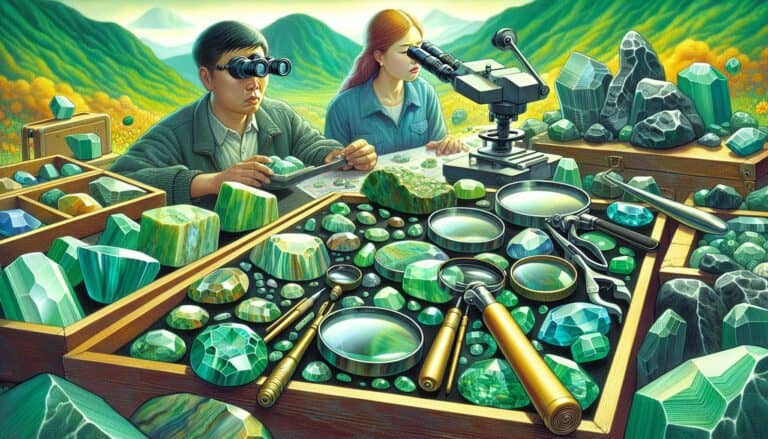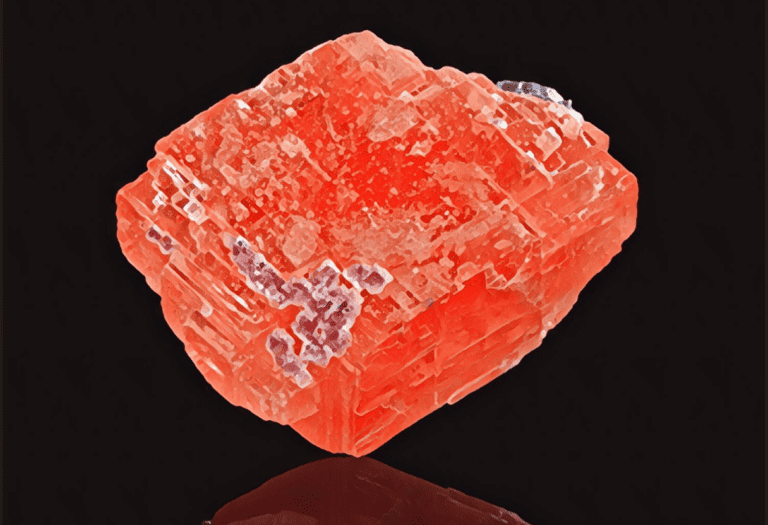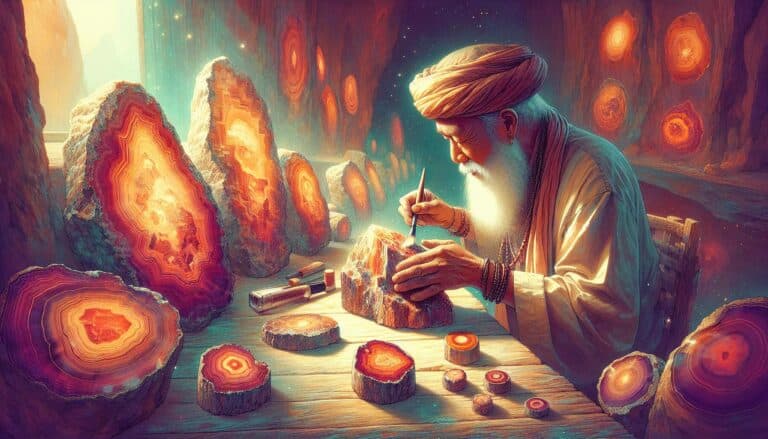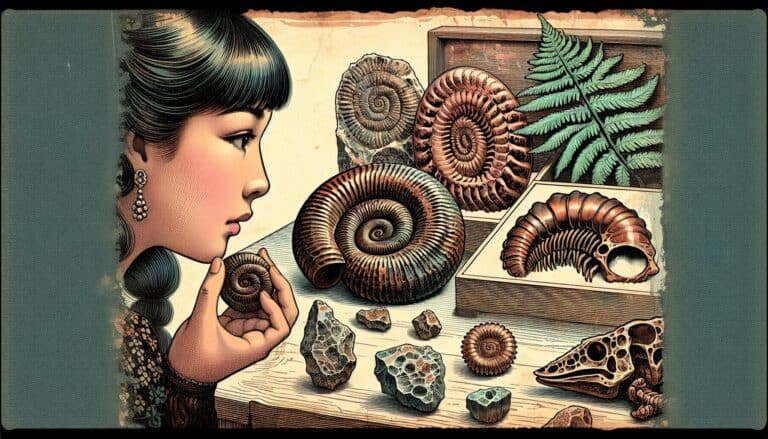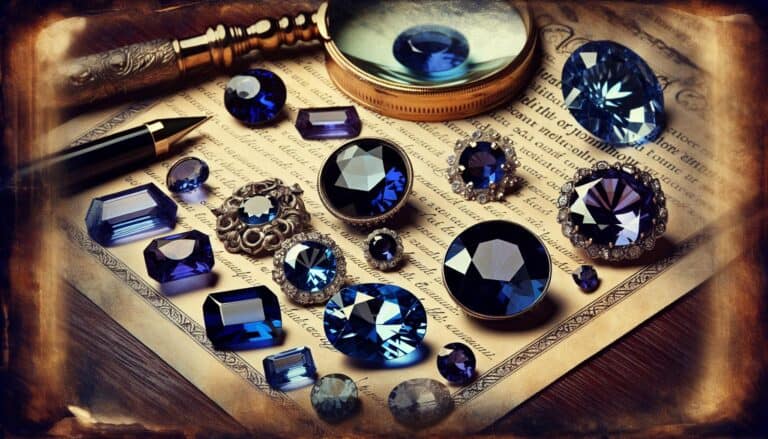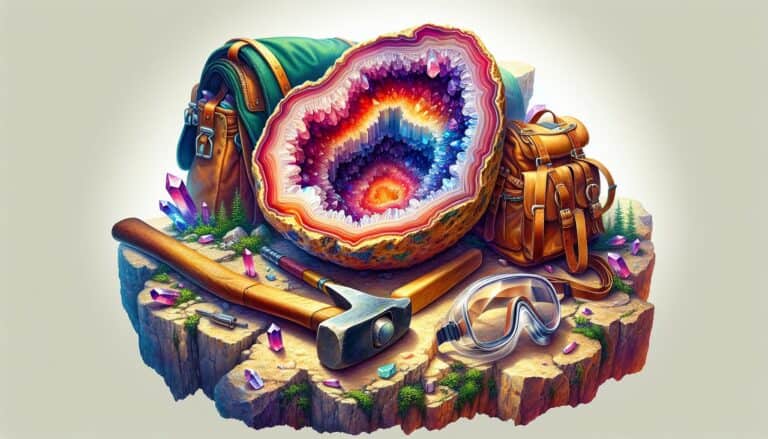Curious about the value of quartz?
You’re not alone. As one of the most common and versatile minerals on earth, quartz is a staple in both the tech and design industries. But its abundance doesn’t necessarily mean it’s cheap—various factors affect its worth.
Whether you’re eyeing a stunning quartz countertop or investing in tech-grade crystals, understanding the factors that influence quartz pricing is key. From color and clarity to size and demand, the value of quartz can vary widely.
Let’s dive into what makes quartz so valuable and how its price is determined.
Quartz value is influenced by color, clarity, cut, and market demand. Rare colors like deep amethyst are prized, while clear, well-cut quartz is more valuable. Availability and tech applications also affect its price. High-quality quartz, especially unique varieties, command higher prices due to rarity and demand.
What Is Quartz?
Quartz is one of the most common and versatile minerals found on Earth, making up a significant part of the earth’s crust. You’ll find this mineral in a wide array of colors and forms, some of which are semi-precious gemstones. Quartz is composed primarily of silicon and oxygen, forming a chemical compound known as silicon dioxide (SiO2).
This mineral is renowned for its hardness and resistance to weathering, which explains why it’s so abundantly present in river sands and on beaches. Due to this durability, it’s a preferred material in a variety of industries, from jewelry to electronics.
The unique properties of quartz make it indispensable in the technology sector. It has the ability to vibrate at precise frequencies when subjected to an electric charge, a phenomenon known as the piezoelectric effect. This capability is fundamental in creating oscillators and filters for electronic devices, such as radios, televisions, and watches.
In the realm of design, quartz takes a prominent seat at the table due to its aesthetic appeal. When used in interiors, it presents a luxurious and durable alternative to natural stone. Moreover, its potential for customization allows for a broad selection of patterns and colors, catering to diverse tastes and design needs.
Historically, quartz has been utilized in various cultures as both a tool for daily living and an object of beauty. Today, it continues to be extracted for its many practical applications while also thriving as a mainstay in modern décor and construction.
While quartz’s ubiquity suggests it may be of lesser value, its widespread usage and the demand for high-quality specimens indicate otherwise. Variables such as purity, color variety, and size play significant roles in assessing its worth. With its irreplaceable position in multiple domains, the question of quartz’s value becomes not just about the mineral itself, but also the value it adds to the products and spaces it enhances.
Quartz Prices: Factors That Affect Value

Understanding the various factors that influence the value of quartz is crucial when assessing its worth. Just like diamonds and other precious stones, the valuation of quartz can differ widely based on several key characteristics.
Color, Clarity, and Cut Quality
When it comes to color, connoisseurs and collectors often seek the most vibrant and unique hues. Quartz comes in a plethora of colors, ranging from the purest whites to deep amethyst purples. Certain tones, especially rare or particularly vivid ones, can increase the mineral’s value significantly.
Clarity is another decisive factor; the fewer the inclusions or imperfections within the stone, the more valuable it’s considered. High-clarity quartz is prized for its aesthetic beauty and its use in high-quality jewelry and decor pieces.
Let’s not underestimate cut quality. Precision cutting enhances the natural beauty of the stone, bringing out its brilliance and maximizing its visual impact. Well-cut quartz in ideal proportions commands higher prices on the market.
Market Demand and Availability
Quartz’s value is also heavily swayed by market demand and its availability. Certain varieties of quartz, such as smoky quartz or citrine, are relatively plentiful and therefore more affordable. In contrast, standout types like Spirit Quartz or high-grade amethyst may be in shorter supply, which can hike their prices.
The balance between supply and demand can fluctuate, influenced by fashion trends, new deposits being discovered, or mines being depleted. For instance, a surge in popularity of quartz countertops can temporarily inflate prices for raw materials. Here’s a glimpse at how prices can vary widely:
| Quartz Type | Average Price Range |
|---|---|
| Smoky Quartz | $20 – $50 per kilogram |
| Citrine | $30 – $60 per kilogram |
| High-Grade Amethyst | $15 – $100 per gram |
| Spirit Quartz | $100 – $300 per piece |
Keep in mind that these prices are subject to change as market dynamics evolve.
Remember, aside from subjective factors like beauty, quartz’s intrinsic properties, such as hardness and durability, also play into its overall value in the market. Whether you’re a collector, an investor, or simply someone with an appreciation for this versatile mineral, you’ll find that its worth is as multifaceted as the stone itself.
Understanding Quartz: A Rare Gem

The Rarity of Quartz
Despite its widespread availability, high-quality quartz that’s suitable for gemstone use is indeed rare. The conditions necessary to form gem-grade quartz are specific and not always met, which adds to its value and uniqueness. Quartz can be found all over the globe, but only a select few locales produce crystals that are prized for their exceptional clarity, vibrant colors, and sizable dimensions.
In the gem market, certain varieties of quartz such as amethyst, citrine, and smoky quartz offer a unique draw due to their natural beauty and rarity in optimal form. For instance, deep-colored amethysts are considerably less common than lighter shades, pegging them at a higher value. Similarly, natural citrines are rare because most citrine on the market is actually heat-treated amethyst.
Origins and Characteristics
Quartz is a mineral composed of silicon and oxygen, and it forms deep within the Earth’s crust. Understanding its origins is key to grasping why certain varieties are more valuable than others. Quartz generally forms in igneous rocks such as granite and can be found in geodes or as sizable points and clusters. It’s the combination of temperature, pressure, and mineral content during formation that results in the myriad of quartz types seen today.
Here’s what you should know about its characteristics:
- Hardness: Quartz ranks at 7 on the Mohs scale, making it an excellent choice for everyday jewelry.
- Chemical Composition: Made up of SiO2, or silicon dioxide.
- Color Variety: The presence of different trace elements can lead to colors ranging from rose (rose quartz) to black (morion).
- Formation: Typically forms in hexagonal crystals and can range in size from small points to large clusters.
The geology of a location profoundly influences the type of quartz found there—its color, clarity, and even shape. This means that not all quartz is created equal. Knowing where your quartz originated from and the conditions in which it formed can provide insights into its inherent value. What’s more, these factors often tell a story, tying the stone to the very fabric of the Earth’s dynamic geological history. Each piece of quartz, therefore, is not just a pretty gem but a glimpse into the natural world’s complexities.
Quartz Grading and Valuation
The Grading System for Quartz
When you’re trying to determine the value of quartz, it’s crucial to understand the grading system. Quartz is graded based on factors like purity, color, size, and shape. Purity, or the lack of inclusions and impurities, can significantly increase a quartz specimen’s value. The grading system for quartz also considers the richness and consistency of its color. More vibrant and unique hues may command higher prices.
Size is another critical factor—larger pieces with exceptional clarity are rare, making them more valuable. Then there’s shape: well-formed crystal structures can be more desirable than those with less definition. Gemologists and quartz specialists use a standardized set of criteria to assess these characteristics, often referring to the Mohs hardness scale, where quartz ranks at a solid 7, indicating its durability.
The grading scale isn’t linear or universally fixed, meaning each piece of quartz is evaluated on its individual merits. With such a diverse mineral, grades can vary widely, from industrial-grade used in manufacturing to gem-quality stones that are faceted for jewelry.
Certification and Appraisal
When you’ve got a piece of quartz and you’re curious about its worth, getting a certification from a reputable lab can add to your peace of mind. A certified appraisal can unlock the true value of your quartz, providing an accurate assessment that is recognized by insurers and the gemstone market. The certification process will analyze the quartz using the aforementioned grading criteria, along with additional tests to identify any treatments or enhancements that could affect its value.
Appraisals are typically conducted by experienced gemologists who have the expertise to accurately assess the quality and worth of quartz. This might include detailed examinations under magnification, comparing the stone to known standards, and even testing for specific optical properties. Documentation from such an appraisal becomes essential if you’re planning to insure your quartz, sell it, or keep it as an investment.
Remember, the market value of quartz can fluctuate, so even with certification, it’s wise to stay informed about current trends and demands within the gem industry. This knowledge will help you understand how your quartz’s worth is tied to the dynamic ebb and flow of the market.
Current Market Trends in Quartz Pricing
Understanding the current market trends in quartz pricing is crucial to making informed decisions, whether you’re a collector, investor, or looking to incorporate quartz into your designs. Raw and unprocessed quartz typically has a lower monetary value, whereas shaped, treated, or otherwise enhanced quartz demands higher prices.
Factors Affecting Quartz Value
Several factors can significantly sway the value of quartz in the market:
- Purity: The more impurities, the lower the value.
- Color: Clear quartz is common, while unique colors like rose or smoky quartz can fetch higher prices.
- Rarity: Certain types like Herkimer diamonds are prized for their scarcity.
- Demand: Popularity in fashion or technology can drive up prices.
Shifts in Demand
Recent shifts in demand have been observed, particularly in the tech industry where quartz’s piezoelectric qualities are integral to various gadgets. For example, the rise of smart devices has led to an increased need for high-quality quartz.
Regional Differences
Price can vary considerably by region due to availability and local economies. For instance:
- Brazil: A major exporter of quartz, often has more competitive prices.
- United States: Known for unique varieties, can command a premium.
Raw Quartz vs. Finished Products
- Raw or natural stones are priced much lower than those that have been cut, treated, or fashioned into jewelry or other decor items.
Up-to-date Pricing
To stay ahead, monitor resources like:
- Trade shows: They can offer a glimpse into emerging trends.
- Online marketplaces: Up-to-the-minute pricing and shifts in consumer preferences are often reflected here.
These sources provide a wealth of information, helping you gauge where the quartz market stands and where it’s heading. Don’t forget that while trends are a guide, the true value of quartz ultimately boils down to what someone is willing to pay. Keep this in mind as you navigate through the ever-evolving landscape of quartz pricing.
The Most Expensive Quartz
When exploring the value of quartz, some varieties stand out in terms of price. Gem-quality quartz, such as amethyst, citrine, and rose quartz, often fetch higher prices. These stones are prized for their clarity, vibrant hues, and the intricacies of their formations.
Among the most expensive is amethyst, particularly the deep purple “Siberian” variety which comes with red and blue flashes. It’s not uncommon for high-quality specimens to reach thousands of dollars per carat. Similarly, rarer forms of quartz like smoky quartz and lemon quartz have their own niche markets where collectors are willing to pay premium prices for their unique characteristics.
Rutilated quartz stands out due to its needle-like titanium dioxide inclusions, creating an appearance akin to trapped lightning. This specific feature can drastically increase its value, especially when the patterns are unique and aesthetically pleasing.
Here’s a quick snapshot of some of the top-tier quartz prices you might come across:
| Type of Quartz | Average Price Range |
|---|---|
| Siberian Amethyst | $50 – $300 per carat |
| Rutilated Quartz | $10 – $50 per carat |
| Smoky Quartz | $2 – $100 per carat |
| Lemon Quartz | $20 – $30 per carat |
Please note, these figures can vary based on the specimen’s size, clarity, and origin.
High-end watchmakers and luxury jewelry brands utilize quartz in their creations, significantly boosting its market value. The Swiss watch industry, for instance, often incorporates quartz into their designs not just for functionality but for the perceived value and elegance it lends to their timepieces.
Keep in mind that while you’re searching for quality quartz, you’re also paying for craftsmanship. Skilled artisans can take a simple quartz and transform it into a stunning piece of art. The labor and creativity poured into it are important factors that contribute to the final cost of quartz-based products.
It’s also worth mentioning that despite these high prices, there’s a continuous search for new quartz deposits. The discovery of new sources could potentially introduce more variety to the market and influence the value of the rarer types of quartz.
Buying Quartz: Tips and Recommendations
When hunting for the perfect gem, knowing where and how to purchase high-quality quartz is pivotal. Here, you’ll learn not just where to look but also how to verify the authenticity and ensure you’re getting real value for your money.
Where to Purchase High-Quality Quartz
Scouring the right places is essential for finding top-grade quartz. High-quality pieces are often found in:
- Specialty Gem Shops: These stores have knowledgeable staff who can guide you through their selection.
- Jewelry Stores: Look for stores that specialize in fine gemstones other than the usual diamonds and pearls.
- Online Marketplaces: Websites like Etsy and eBay can be treasure troves for quartz, but they require a keen eye for quality.
- Gem Shows: Such events bring together collectors and vendors, offering you a vast range of options.
- Mining Tours: For the more adventurous, some mines allow you to dig for your own quartz.
When shopping, remember to:
- Verify the seller’s reputation through reviews and testimonials.
- Ask if they provide certificates of authenticity.
- Compare prices from various sellers to ensure you’re getting a competitive deal.
Ensuring Authenticity and Value
With the abundance of synthetic stones and enhanced gems, ensuring the quartz you buy is genuine is imperative. Here’s how to safeguard your investment:
- Certificates of Authenticity: Reputable sellers should offer a certificate that states the quartz is natural.
- Inspection Under Magnification: Real quartz has unique characteristics like inclusions that aren’t found in synthetic counterparts.
- Ask About the Stone’s Origin: Knowing where the quartz was mined can provide insight into its value.
Remember, the worth of quartz can fluctuate based on color, clarity, size, and rarity. Keep this in mind when assessing the value of a piece. Invest in a professional appraisal if you’re unsure about your quartz’s value—it’s worth the extra step for peace of mind and significant investments.
When you’re equipped with the right knowledge, purchasing quartz becomes a rewarding experience that yields beautiful and valuable additions to your collection. Whether it’s for personal enjoyment, investment, or a gift, ensuring the quality and authenticity of your purchase will help maintain or even increase the value of the quartz over time. Keep in mind that the quartz market is continuously evolving, with new finds and crafted pieces regularly entering the scene. Stay informed and engage with the community to discover the latest trends and opportunities in the world of quartz gems.
Conclusion: Buying & Selling Quartz
You’ve seen that quartz’s worth spans a wide spectrum, influenced by factors like rarity, color, and the artistry involved in its transformation.
Whether you’re drawn to the allure of amethyst or the uniqueness of rutilated quartz, there’s no denying the appeal these gems hold in various markets. Remember, the true value of quartz goes beyond its price tag—it’s about the beauty and distinctiveness each piece brings to your collection. As you venture into the world of quartz, armed with the knowledge of what to look for and where to find it, you’ll be well-equipped to make savvy purchases that reflect both your personal taste and the investment potential of these versatile gems.
Stay curious, connect with experts, and you’ll uncover the multifaceted world of quartz, one that promises both aesthetic pleasure and a tangible sense of worth.


